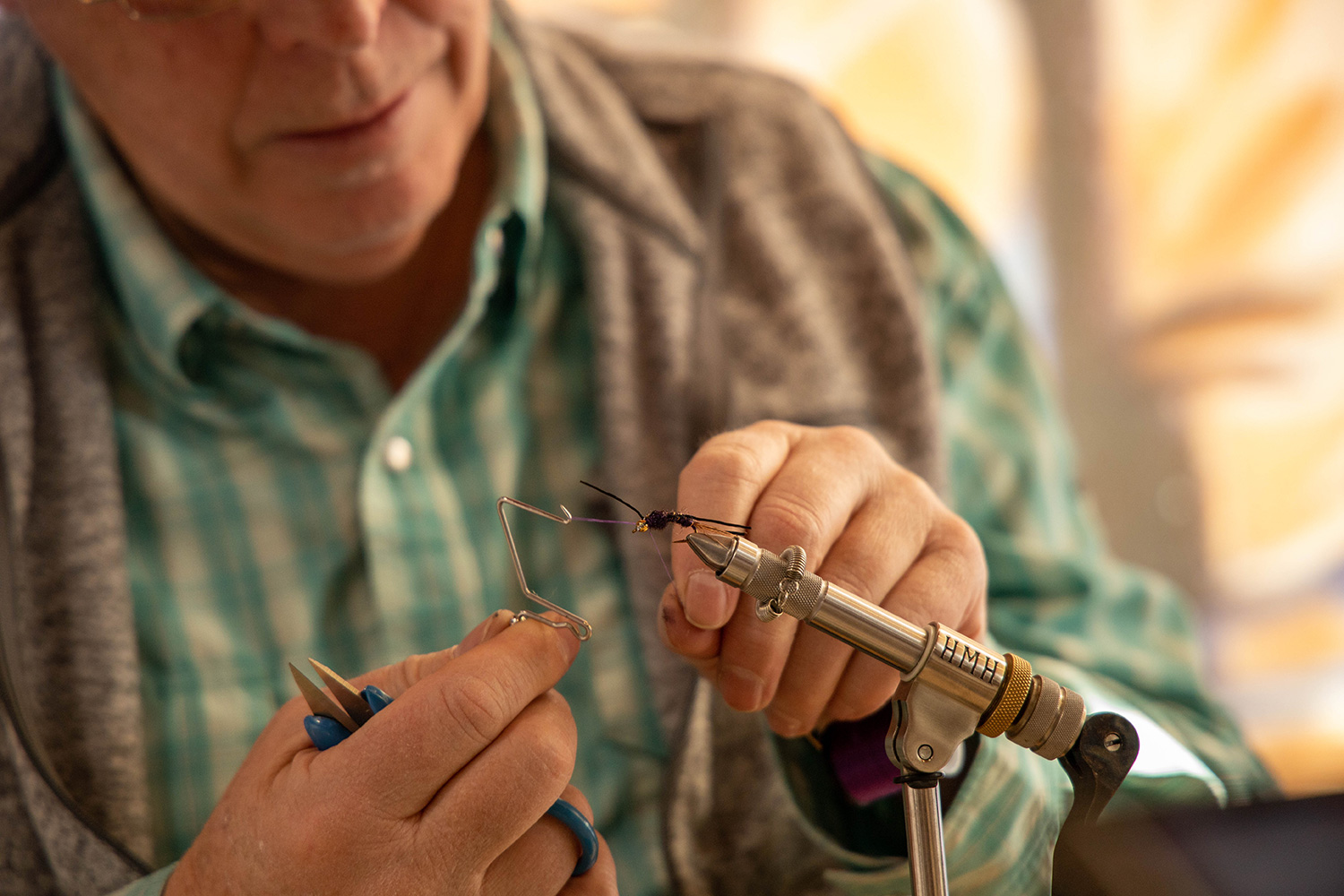by Joel L Evans
A fiberglass fly rod. An automatic fly reel. And a scruffy fly at the end of my line. Four decades ago, that was my fly fishing repertoire. Trout eagerly snatched up the simple offering cast into the shallow pool. Such an easy day had happened before that one day. But there was something different on that day years ago. More specifically, there was something different about the fly on that day. A fly like no other.
My fly of choice that day didn't come from under the soft fluorescent lights of a store display. You couldn’t have purchased it anywhere because it came from my kitchen table. It came into being out of a fly tying kit of cheap tools and materials purchased as an experiment. And once on the river, the trout proved the experiment a success.
Want to witness some of those experiments first hand? The opportunity is now. For the next several Saturday mornings, Montrose Anglers hosts “On the Vise Fly Tying Days”. Each Saturday, a different fly tyer shows off how to tie their favorite patterns. You and I get to watch and learn closeup while the tyer not only competes the step by step fly, but explains how to rig it up and when and where to fish it.
As the host, Nolan Egbert, owner of Montrose Anglers, said that “outreach to the community is one of our core values”. By organizing the demonstrations, both novice and experienced tyer can learn a few new tricks. Fly tying is a craft that has no one right way to tie a fly. Whatever you do may be different but is nonetheless “right”.
Nolan commented that “although you can fish year-round, hosting the winter season tying days is a great way for fishermen to gather and socialize in a less-fishable time”. I enjoy the gathering. I fish in the winter, sometimes one of the few local rivers free of ice such as the Uncompahgre River in town, or ice fishing some nearby reservoir. But gathering with like-minded fishermen on a cold winter morning is equally fun.
Although I didn’t realize it when I first stared learning to tie flies, the best reason to learn is that tying actually improves your fishing. Trout are motivated by several factors, not the least of which is the search for food. (Sounds like me!) A better understanding of what trout eat will make one a more effective fisherman. And fly tying, no matter how the flies themselves turn out, educates one a lot on what trout eat.
As one learns tying, one also learns about the kinds of insects trout feed on, where these insects can be found, their various colors, shapes, sizes, forms, and the multiple stages of their life cycles. And it is not just insects we imitate, but other trout food such as small fish or beetles. All of this information is useful for fishing.
Most patterns are very easy to tie and to tie well. Other patterns can be complicated, using material or techniques that make a simple craft difficult. But don’t let the seeming difficulty dissuade you from getting started. Try the simple first.
Not much in the way of equipment is really needed to tie a number of effective patterns. However, fishing and fly tying are like most of our obsessions in that one can indeed buy and buy and buy and still not have it all. But one doesn’t have to start with it all to tie a fly that you can catch a fish on at your next outing.
A minimum tool assortment includes a vise, scissors, bobbin, a bobbin threader, and a bodkin. As with any hobby, there is always more. There are many specialty tools that can be added to your collection as needed. You can buy these tools in a kit or individually. In general, you get what you pay for.
A vise is the largest and single most expensive tool you will need. For the beginner or occasional tyer, the less expensive models are adequate, then upgrade if you tie a lot. Scissors, good scissors are critical. Cheap scissors will work, but if there is any one tool you might spend a little more on at first, then scissors would be it. The bobbin holds a spool of thread, guiding the thread into small and precise placements. Getting the thread placed right is often the key to durable and life-like flies.
Upcoming Saturday tying days and the presenting tyer are: February 15 with Gale Doudy, February 22 with Tim Jacobs, February 29 with Joel Evans, March 7 with Bob Churchill and March 13th our final gathering with Jake Kepler. Sessions are free and go from 10:00 a.m. to 12:00 noon. Montrose Anglers is downtown Montrose at 309 E Main, with additional parking in the rear.
Since those high-country brook trout are buried in snow right now, Saturday would be a good time to get in on the tying action. So what does it take to create such a concoction that a fish will actually believe is something to eat? Probably less than you think. Think simple at first, get some basic fly tying tools and materials, and then use your own fly to catch a fish. Call me if you want help getting started, especially for a kid.

